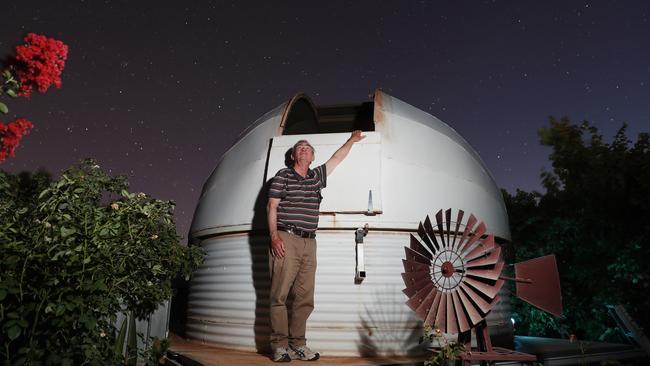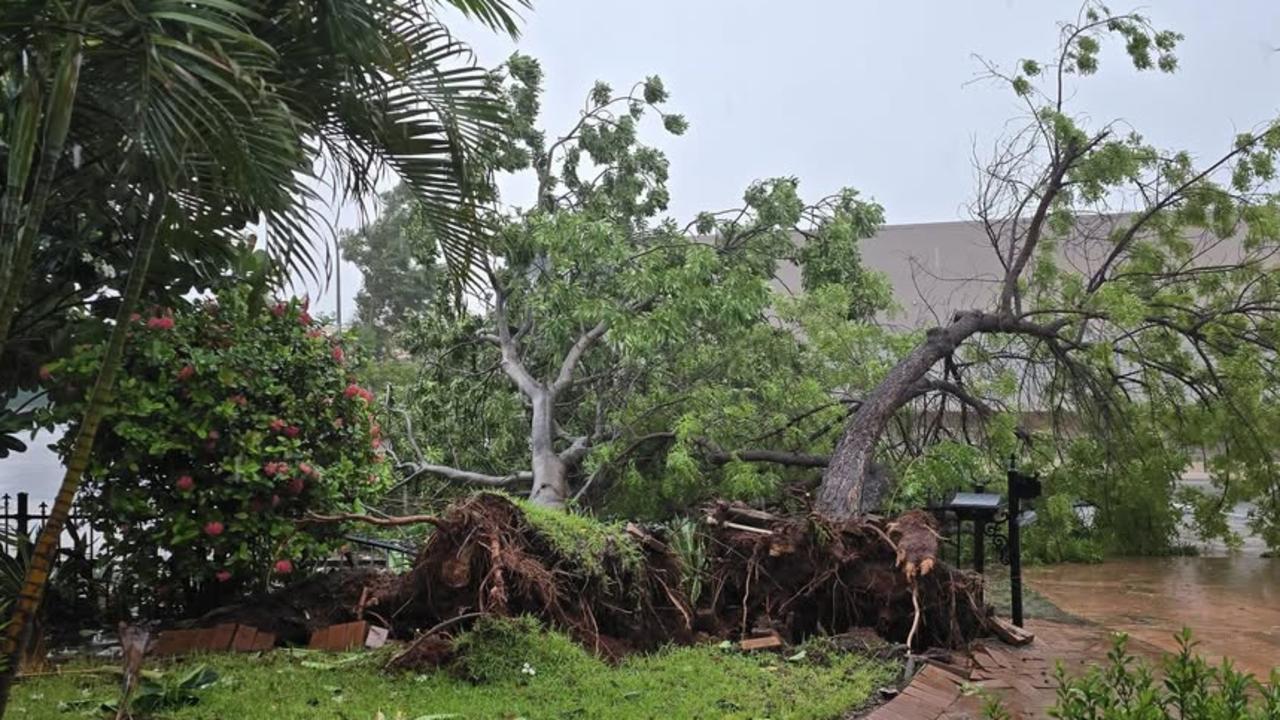Stargazer will be ready when two worlds ‘collide’
When Broken Hill greenskeeper Trevor Barry says there are big things looming on the horizon, it is always worth paying attention.

When Broken Hill greenskeeper Trevor Barry says there are big things looming on the horizon, it is always worth paying attention.
A former fitter-machinist, who left school after year 10 to work on the local mines, Mr Barry has reinvented himself in later life and become one of the world’s premier amateur astronomers.
His research has been so critical to our understanding of Saturn and its atmosphere, he has even had NASA knocking on his door seeking out his expertise. And it has all been done from a handbuilt observatory he designed and constructed in his own backyard in the middle of the Outback.
Now, the 69-year-old is hoping to further his groundbreaking studies when the solar system’s two greatest gas giants – Jupiter and Saturn – converge on the horizon next week in their closest conjunction in almost 400 years.
“It’s a very difficult task to eke out fine, discrete detail within the atmosphere of Saturn but I’ve dedicated my life to doing exactly that and it’s extremely satisfying when I capture good data,” Mr Barry said.
“Next week’s conjunction is a really unique opportunity to get a greater understanding of these gas giants and I will be imaging all of it from ... my observatory.
“The apparent separation of Jupiter and Saturn from Earth on December 21 will be just six minutes of arc – that’s the closest they will have appeared together since 1623. The next time we have a chance of seeing a conjunction as close as this will be 2080 and, by then, I will be long gone.”
The “great conjunction”, as it is known, will coincide with the summer solstice on Tuesday and will be visible for an hour or so after nightfall from about 9pm.
To get the best vantage point of the event, astrophiles should find a clear spot where they can watch the sunset unobstructed by trees or buildings.
Jupiter will be the first to appear in the western sky followed by Saturn, both shining planets distinguishable from the stars by the fact they do no twinkle.
Stargazers with a telescope should be able to make out both the rings of Saturn and the moons of Jupiter in what looks like close proximity from Earth – in reality they remain millions of kilometres apart.
Mr Barry’s passion for the astrological event is palpable. After all, it was his study of Saturn that first attracted the attention of the globe’s most prestigious astronomical associations.
NASA even invited him to contribute to its Cassini mission imaging Saturn after researchers realised he was regularly capturing clearer pictures of the ringed planet’s surface from his Broken Hill backyard than the multibillion-dollar satellite orbiting the gas giant.
Since The Australian last caught up with Mr Barry two years ago, he has visited the US space agency in California and had a number of scientific papers published in leading journals such as Nature and Icarus. He is now researching what he hopes will be another major breakthrough.
“I’m working on the rotation rate of the hexagon at the north pole of Saturn (which) is quite intriguing because it’s thought that the rotation rate of the hexagon is slightly less than the internal rotation rate,” he said.
“I have a lot of data, a lot of data over a lot of years, and I’ve tied that down to a period, which is near enough to 0.4 of a second longer than what the internal rotation rate is. I’m probably a bit of a dill but I get excited about things like that.”
For those astrophiles who find the thought of the once-in-a-lifetime conjunction equally exciting, Mr Barry said the planets were easy to spot on the western skyline each evening.
“You can see both of them with the naked eye maybe 20 to 25 degrees above the horizon just after the Sun has dipped – you don’t need a telescope but you will get some great detail with a pair of binoculars,’” he said. “Each night, Jupiter and Saturn will be getting noticeably closer up until the 21st; they’ll start to separate again.”
When that happened, Mr Barry said, the two planets would draw too close to the horizon in the west to study from his observatory and that he would spend the following month plotting further improvements to his observatory in his never-ending quest for better images before Saturn re-emerged in the east in February.
“I like to claim I’m the only astronomer greenkeeper in Australia,” he said. “And let me tell you, when I’m out there walking up and down behind various mowers and other implements, it’s just brain-numbingly boring.
“But some of the best ideas I’ve ever had pop into the old head about how to improve my processing regimen or build new equipment. It’s not a bad combination, spending my days tending to the earth, and nights studying the stars. The amount of pleasure I get from it is astronomical.”


